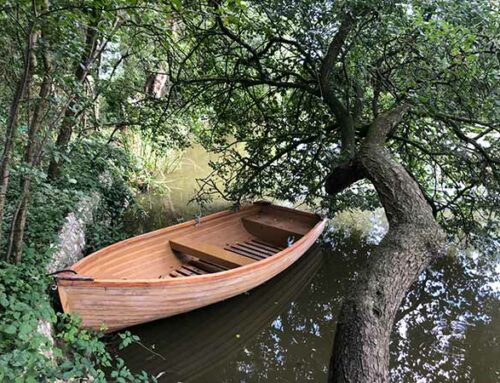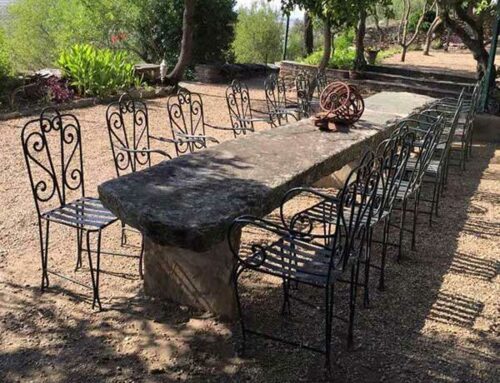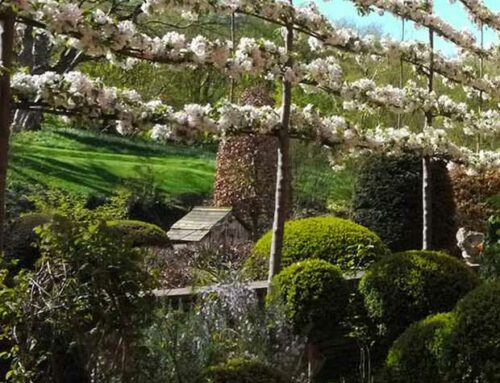Winkworth Arboretum located in Godalming, Surrey is a stunning 130-acre landscaped woodland of rare and unusual trees created by the visionary Dr Wilfred Fox. It’s the National Trust’s only arboretum and welcomes over 100,000 visitors annually.
The arboretum blazes with colour throughout the year. It’s a masterclass in using seasonal changes to create stunning designs from January to December. It’s an inspirational day out that may change how you plant up your flower borders!
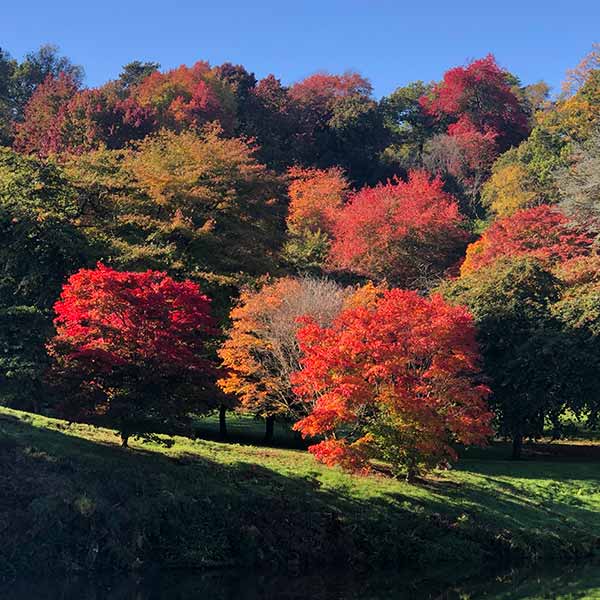
An example of the striking Autumn Colour
History of the Arboretum
The National Trust took over Winkworth Arboretum in 1988 and manage it in the way it was first conceived by its creator, Dr Wilfred Fox, ‘using plants to paint a picture’.
Dr Fox was a well-respected dermatologist living in the Thorncombe Valley and when the land next to his farmhouse was offered for sale in 1937 he purchased it and set about creating a landscape arboretum that embraced nature’s year-round colours.
When Dr Fox bought the woodland and lakes it was filled with larch and Douglas fir. One of his first steps was to add colour with liquidambers, Japanese maples and oaks on the upper slope. This was the first step, but there were many more to come.
During the War Years
Not long afterwards his purchase was complete, World War 2 broke out and aged 64 Dr Fox signed up as an ambulance driver in France until 1940. As part of the war effort, the government ordered that the woodland larches were felled, and this began the creation of open areas in the arboretum.
Dr Fox’s family and friends plus just one employee provided Winkworth’s labour for years and together through the war years they planted cherries, azaleas, and maples for their rich colours. In 1941 family evacuees from his London business helped build the azalea glade near today’s boathouse.
During his time building the arboretum, he looked for a way to preserve it for future generations. Eventually, with some council investment, it was taken on by the joint Royal Horticultural Society and National Trust Joint Gardens scheme. In later years Dr Fox donated more acres of woodland before he died in 1962.
Today, Winkworth Arboretum is run solely by the National Trust and it’s open to the visiting public most days of the year.
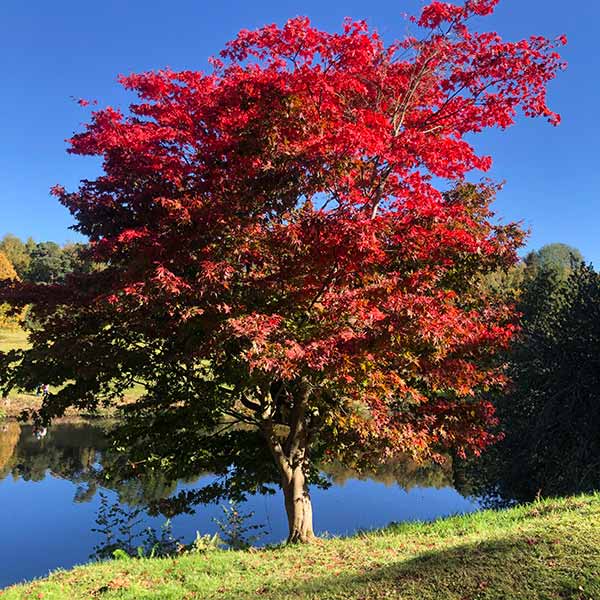
Japanese Acer in full Autumn Colour
Wilfred Fox’s Vision
Wilfred Fox considered the Thorncombe Valley ‘one of the most beautiful bits of Surrey that is left’ and because he was the Secretary of the Roads Beautifying Association he had clear plans and plenty of experience for his landscaping vision.
Much of his inspiration was drawn from the landscape gardens of Westonbirt, Leonardlees, Exbury, and Sheffield Park. He drew out stunning colours, being careful to avoid hard, clear-cut lines and planted wild species rather than cultivars using well-established woodlands as inspiration.
Dr Fox was especially interested in sorbus trees and planted 50 sorbus species in 1943. Today, Sorbus Hill is an area well-loved by its visitors for its jewel-like autumn colours.
As the war years drew to a close, the arboretum tackled springtime colour, including crab apples, more cherries, and magnolias. This ensured year-round colours that were so integral to Winkworth’s design.
Planting For The Future
Planting for the future was a key aspect of this vision. Take for example the magnolia wood. It was planted for the interest of future generations with long-lived trees including numerous magnolias, 10 different species of oak and seven species of beech.
The magnolia wood contains many different species of magnolia, including sweetly-scented white-flowering willow-leaved magnolia. It’s filled with flowers in early spring and we can still see the choice of stunning colour combinations today. No doubt future generations will enjoy his views too. It’s quite a legacy.
What’s At the Arboretum Today?
As well as the rightly popular magnolia wood, the arboretum has numerous areas of interest. It can take all day to walk around absorbing its colour and atmosphere.
The Holly Wood
Filled with 40 different hollies, and Dr Fox’s memorial created by Sir Hugh Casson, The Holly Wood is a beautiful spot for winter colour. Frosty trees and bright berries abound in the festive season, then camellias and sweetly scented witch hazel emerge in January and February. This winter garden is a special treat full of spidery red, orange, and yellow hamamelis flowers.
Sorbus Hill
Dr Fox’s specialism and a beautiful spot from September to November because it’s filled with rich autumnal colours that lead the view out to miles of surrounding countryside.
Badgers Bowl
Another autumnal treat that’s surrounded with intense colour from tupelos, acers and maples. The bowl is a grassy meadow in the centre of the arboretum that’s perfect for picnics or just absorbing the atmosphere. It’s a big draw in the summer months too.
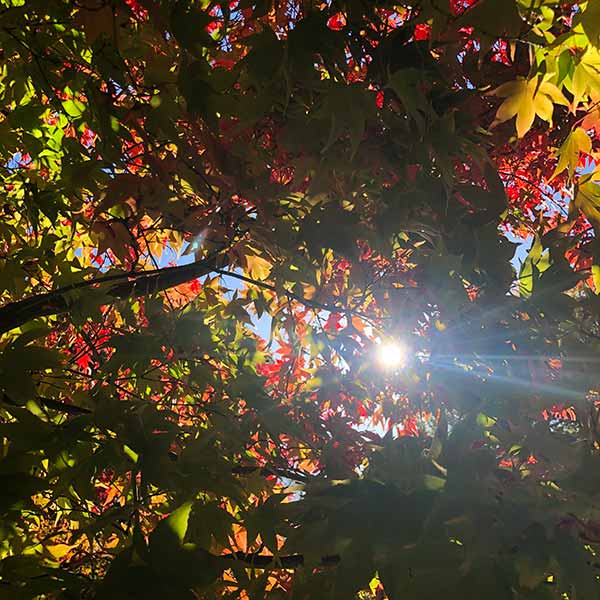
Sunshines illuminates the Autumn Leaves at Badgers Bowl
Azalea Steps
Ablaze in springtime with a fantastic array of azaleas in all colours plus an autumnal display of backdrop maples the azaleas steps are a masterclass in planting for year-round colour on a grand scale.
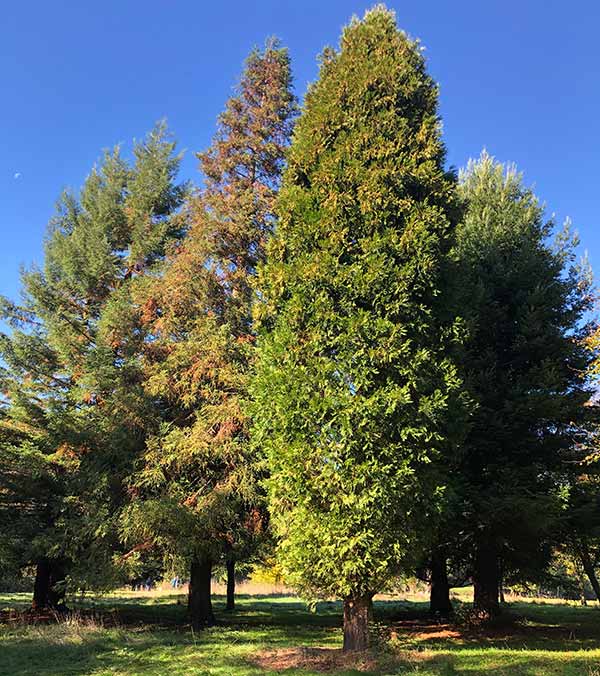
Metasequoia Dawn Redwood
Rowe’s Flashe Lake and Boathouse
A beautiful tranquil lake with a famous 100-year-old boathouse that’s featured in films and TV series. Picnic here with the resident wildfowl and admire the view that includes the magnificent metasequoia dawn redwoods and stunning colours reflected in the calm water.
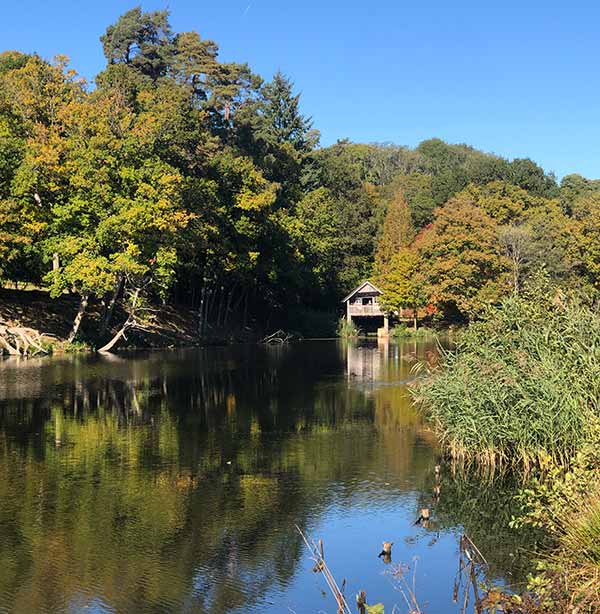
Incredibly Romantic View of the Boat House in the Autumn Sunshine
Phillimore Wetlands
This area of wetland is home to numerous damp-loving plants including gunnera manicata and it’s left undisturbed. Cross the bridge made from recycled bottles to keep your feet dry. See what wildlife you can spot amongst the lush greenery.
There’s a lot to admire here, and one of the best ways to find your way around is on a pre-planned walking route. You can look them up in advance on Winkworth’s website. They range from flat easy strolls to a longer treks up and down the hillsides. The Dr Fox Autumn Amble is popular because it takes in 10 colour bursts from the brightest parts of the arboretum.
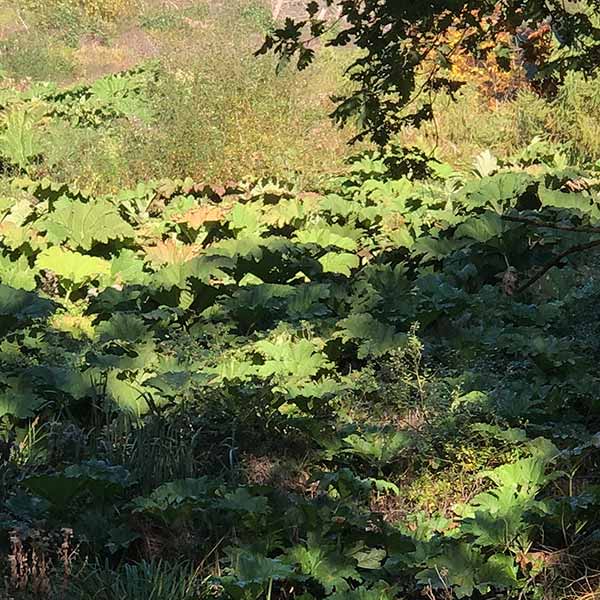
Wetlands Loving Gunnera Manicata
All The Practical Details
If you want to visit Winkworth Arboretum (and we recommend you do!) booking in advance is essential, especially during the most popular autumn months when the landscape is set on fire with red, orange and golden leaf changes.
Dogs are welcome, there’s lots of parking, and last entry is 4 pm or 3 pm in the winter seasons.
To keep your strength up there’s a tearoom serving lunch plus hot and cold drinks, toilets are located by the visitor entrance, and there are play areas for children who have energy left after walking around the wide-open spaces.
Winkworth’s accessibility is partial because it’s set on a slope, but there’s an access-for-all trail that takes in the top circular area with stunning views.
Winkworth has all the facilities you’d expect so you can enjoy your day admiring the trees and shrubs whatever the season.
When Is Best To Visit Winkworth Arboretum?
The most popular time to visit is during autumn. Winkworth is best known for its autumn displays of maples, sorbus, rowans and oaks all perfectly placed by Dr Fox to create beautiful shades of gold, amber and red, but spring, summer and winter are excellent times too.
In spring the azalea walk is a must see because it’s packed with a rainbow of stunning azaleas. Spring time cherry blossoms are strewn throughout the arboretum and the wooded areas are covered with a carpet of bluebells during April.
In summer, it’s the perfect spot to take a picnic beneath lush green canopies that provide plenty of cool shelter, and during winter the Holly Wood is a spectacular site with its frozen cobwebs, bright berries and spidery witch hazel flowers in January.
There’s never a bad time to visit Winkworth arboretum. It’s always full of seasonal colours that’ll inspire you to paint a picture with plants in your own garden.

